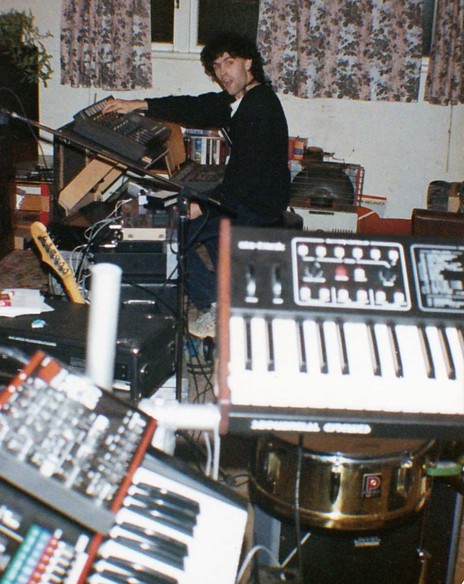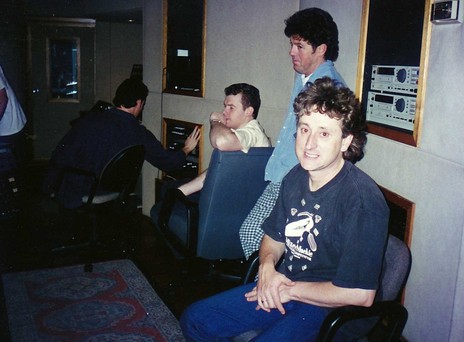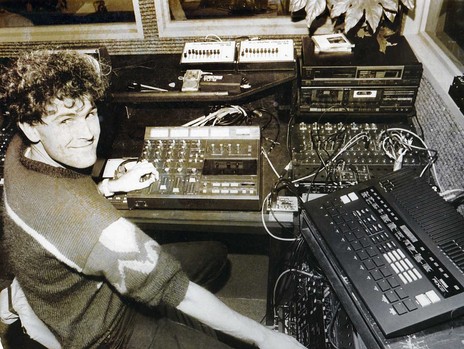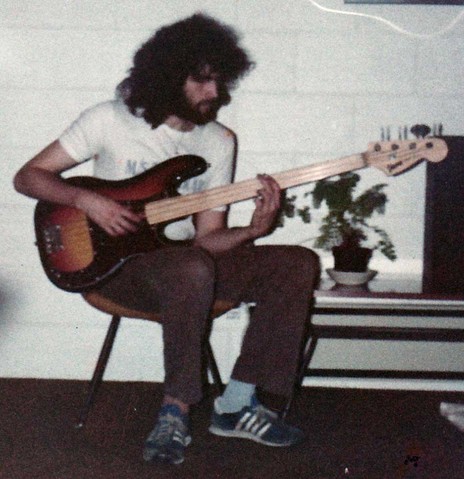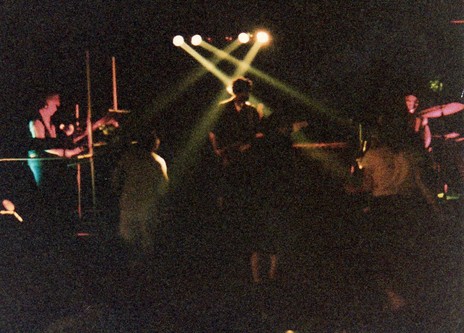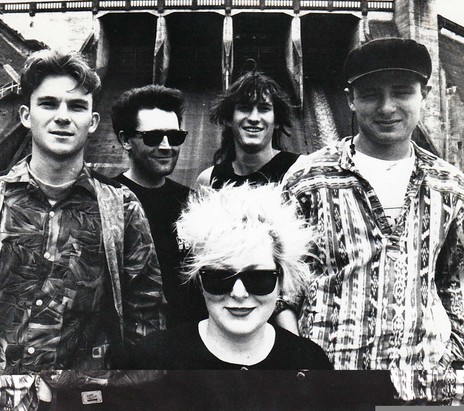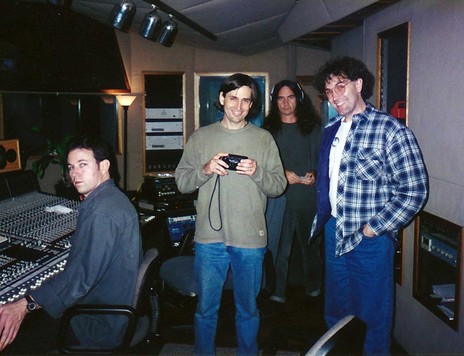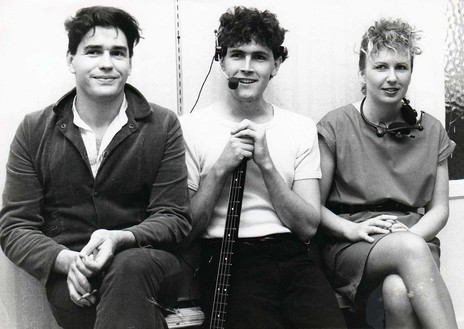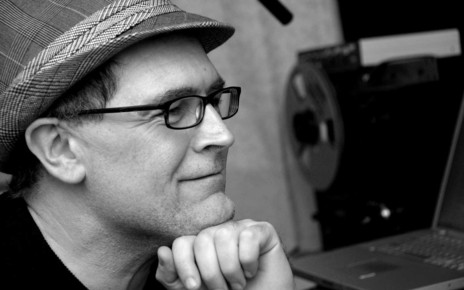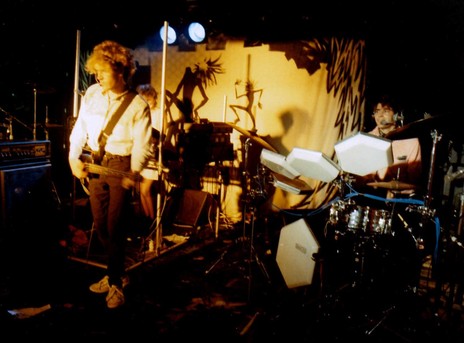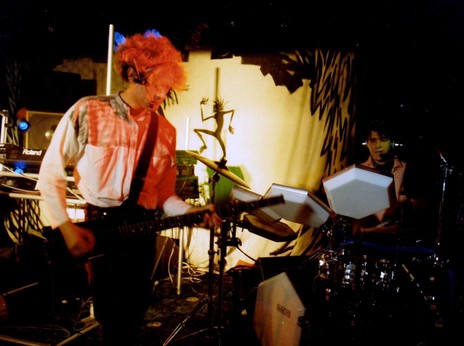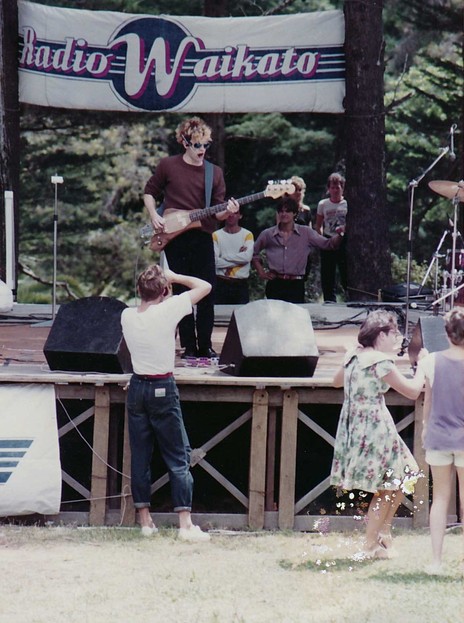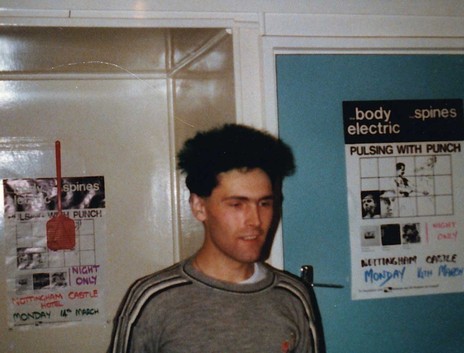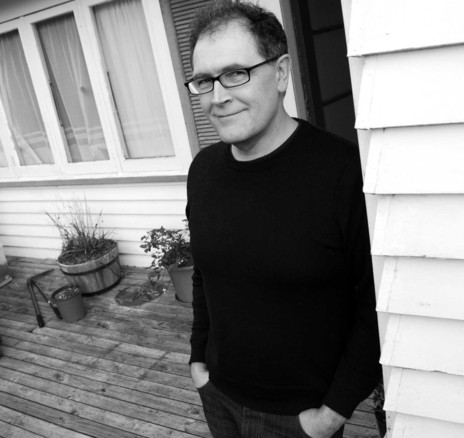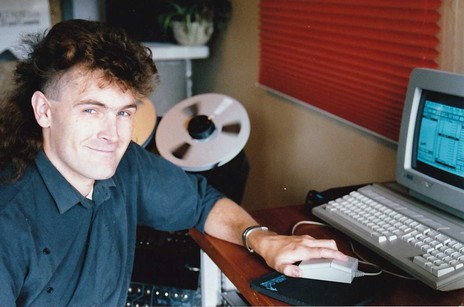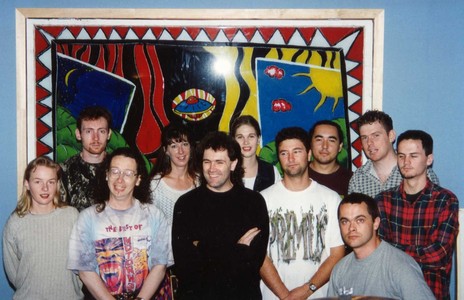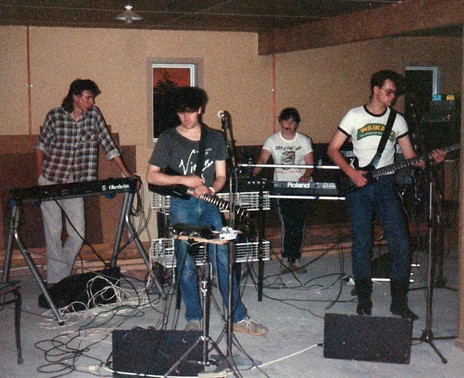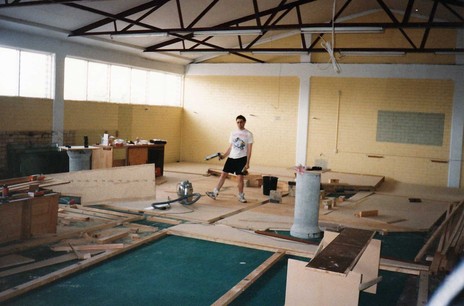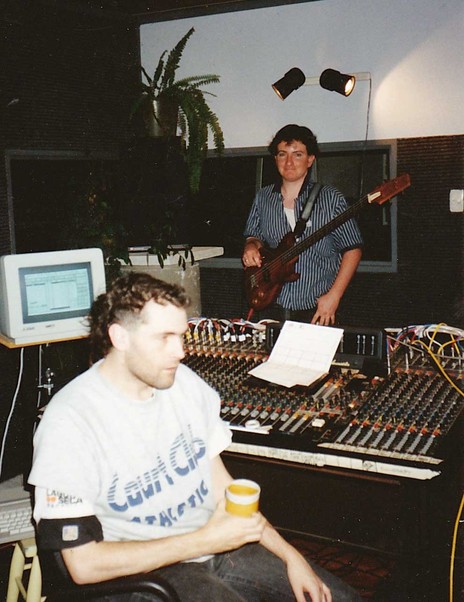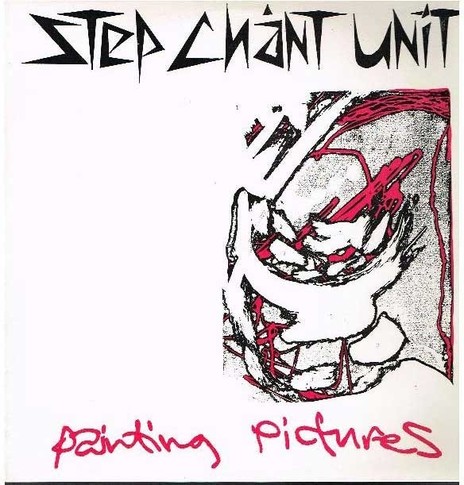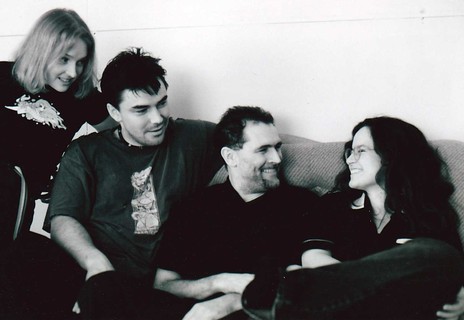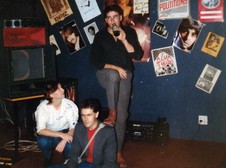Born Mark Brookes in July 1960 in Lanark, Scotland. He was five years old when the family emigrated to NZ, settling first on Auckland’s North Shore before moving to Mt Roskill and then back to Scotland. “I was seven years old when we returned to Scotland and by then I had lost my Scottish brogue. The kids at school mocked my Kiwi accent mercilessly, calling me Frenchie while throwing stones at me.”
Fortunately the Scottish sojourn was temporary and a year later the family were back in Mt Roskill.
Brookes recalls always being into music and remembers with particular fondness sitting in front of the family’s radiogram, exploring his father’s “curious” record collection which included a number of Hank Williams records and classics like Tchaikovsky’s Swan Lake.
By the time his teenage years rolled around, his musical taste, in part due to the influence of his father’s record collection, was by comparison with his peers at Green Bay High somewhat unusual and included Brian Eno (he cites Eno and David Byrne’s My Life In The Bush Of Ghosts as especially influential), The B-52s, Devo, Lee Hazlewood and Nancy Sinatra. “I was a teenage music radical,” he says, “always on the lookout for something out of the box.”
Listening to Devo steered Zed toward his first instrument, the electric bass. The bass guitar is not often the first port of call for a young musician, but Brookes was drawn to the low frequencies and in the case of Devo, “its looks”. Devo guitarist Mark Mothersbaugh played a custom made guitar of unusual design, one that the teenage Brookes found rather fascinating, enough so that he decided to make a replica. He had an after school job assembling bunk beds in a joinery factory. Using the factory’s equipment and an old second-hand bass as a template, he cut a guitar shape similar to Mothersbaugh’s then assembled a preamp and using the pickups from the old bass, assembled his first instrument.
A natural when it comes to technical matters, Brookes thought the sciences were going to be the place where he could apply his skills and make a living, so after leaving school in 1978 he took up a trainee position as lab technician with the Forest Research Institute, a crown research institute based in Rotorua. FRI specialised in forestry research but aside from a project that turned wood pulp into alcohol he found the work boring.
Of more interest was the bass guitar and his downtime was spent practising in his room at the forestry worker hostel he called home, fielding complaints about “the bloody racket”.
His first band was a three-piece proto-synth band called Zener and the Diodes, a name he chose because it echoed his burgeoning interest in electronics. Zener, a kind of diode, was the source of the nickname by which he is known. “I had three friends called Mark and it was kind of confusing and people started calling me Big Zed, after the Z in the band’s title, and after a while that became plain Zed.”
Zener and the Diodes started off as a covers band whose music was all about “what we could play rather than what we wanted to play and whatever it was that could get us through a gig, usually a mix of blues, which appealed to the local pub audience – and some Devo for ourselves.”
In 1981, the Band, Feeling somewhat frustrated by the small Rotorua scene, relocated to the bright lights of Hamilton in search of opportunity.
As the band became more adept and the line-up stabilised, it focused more and more on original material.
In 1981, the band, feeling somewhat frustrated by the small Rotorua scene, relocated to the bright lights of Hamilton City in search of opportunity, the move also bringing an end to any notions Zed has about being a scientist. With new drummer Neville Sergent on board, a fresh image was needed, so names were put into a hat and the result was Step Chant Unit.
With his attention increasingly turning to matters musical, Zed cashed in his life insurance and purchased a Tascam Portastudio 424 (a 4-track cassette recording system) and taught himself the basics of recording while demoing the band’s songs.
The band’s first release, the 1983 cassette EP I.C Dreams, was recorded on the Tascam but the song that made their name was recorded at Mandrill in Auckland for the princely sum of $2,500.
“For us ‘Painting Pictures’ was an expensive song to record,” says Brookes, “and the time spent making and paying for it basically equaled the lifespan of the band.”
‘Painting Pictures’ was picked up by Wellington label Jayrem and released in 1985, peaking at No.34 on the national singles chart. Suddenly the band found themselves in demand. They were flown down to TVNZ’s Avalon studios in Wellington to film a clip for Radio With Pictures and with the national exposure were able to tour the North Island to reasonably sized audiences and score support slots with some of the bigger touring acts bands including Peking Man.
Itching for some extra sound colour, Zed eventually made the switch to guitar when they discovered a compatible bassist in Dean Carter. However, Step Chant Unit effectively ceased operating in 1985 when Zed went to work full-time as a studio engineer at Tandy’s Recording Studio.
During the 1980s and 1990s you could find a Tandys store on the main street of just about every town throughout the Waikato, Bay of Plenty and King Country. Through drummer Neville Sergent, who worked behind the counter at a branch of Tandys, Brookes met the retail chain owner Neil Nooyen, which opened the door to the next phase of his professional career.
At this stage Brookes was working at a glass factory in Hamilton and had recently sliced the tips of four fingers on one hand, almost losing a finger. He remembers playing four nights in row at the Hillcrest Tavern in considerable pain and leapt at the opportunity to move to a less dangerous job, one more in tune with his inclinations.
Nooyen owned a small lifestyle block on Morrinsville Road at the city’s southeastern edge. Finding themselves at ease in each other’s company he hatched a plan to convert the hay barn into a recording studio. Brookes was tasked with the design and fitout and in 1985 the studio opened for business.
Zed: “We started out with my Tascam Portastudio and recorded bands and artists live to cassette until we met Rex Wade who had was running a 4-track reel to reel recorder in a small studio near Ruakura.”
Wade joined the team and the studio upgraded. When Wade departed the 8-track was upgraded to a 16-track.
While working at Tandys, Zed met and married former Three Men Missing keyboardist Sue Brown. They married, had two sons and produced an EP under the name Silken Blue. The couple eventually parted ways.
In 1993 Zed met Grant Hislop, who had recently moved to Hamilton to start two radio stations, The Rock and The Buzzard – later called The Edge. With the radio projects providing steady cash flow, Hislop’s next plan was to finance a record label and studio, Hark, specialising in regional music. Local rockers Blackjack approached Hislop and asked him to playlist a track off their album, Deal, which had been recorded and produced by Brookes at Tandys in 1992.
Hislop was impressed with the quality of the recording and approached Brookes with an offer.
Hislop was impressed with the quality of the recording and approached Brookes with an offer. With a large budget at his disposal, Brookes was invited to design, build and fit out a state of the art recording facility. He accepted and a few months later The Zoo opened for business on the main street of Hamilton, a 24/7 commercial production facility that served The Rock and The Edge, fed Hark Records and made a little money on the side as the region’s first school of audio engineering.
When The Zoo went into liquidation in 1997, the Waikato Polytechnic (now WINTEC) purchased much of the equipment for their burgeoning School of Media Arts and contracted Brookes to install it. It turned out to be an agreeable association; he stayed on as a tutor and returned to making music.
Schrödinger’s Cat (later renamed Wonderbug before morphing into St. Lucy) operated from 1997 to 2000. The 2000 EP Joe’s Brain sold out at the release gig at the Hamilton Venue JBC (Jazz Blues Concept bar) and a track, ‘Don't Matter’ appeared on the TV series Mighty Morphin Power Rangers.
In 1999 Brookes worked with Chris and Rhonda (Hofmans) Johnson (formerly of Three Men Missing) on their Moofish project. A resulting album, MooFishin, was released in the USA after the track ‘Dark Side Of A Man’s Mind’ received substantial airplay on American college radio. The album spent several weeks on CMJ college music charts.
While working at Waikato Polytechnic Brookes completed a graduate certificate in Music and Film Sound through Queensland’s Griffith’s University and in the early 2000s he moved to Auckland. After a time working in production at Mai FM he returned to teaching audio engineering, this time at MAINZ. He gained a Master of Arts in music alongside colleague Dave McArtney in 2013.
Besides his work as an educator, Zed runs a sound production facility from his home on Auckland’s North Shore, makes music as a solo artist Mr Zeberdee, and continues to participate in various band projects, including an outfit (DMZ) he formed with former Step Chant Unit bassist Dean Carter. They released an album in 2007 called Ampersand.
